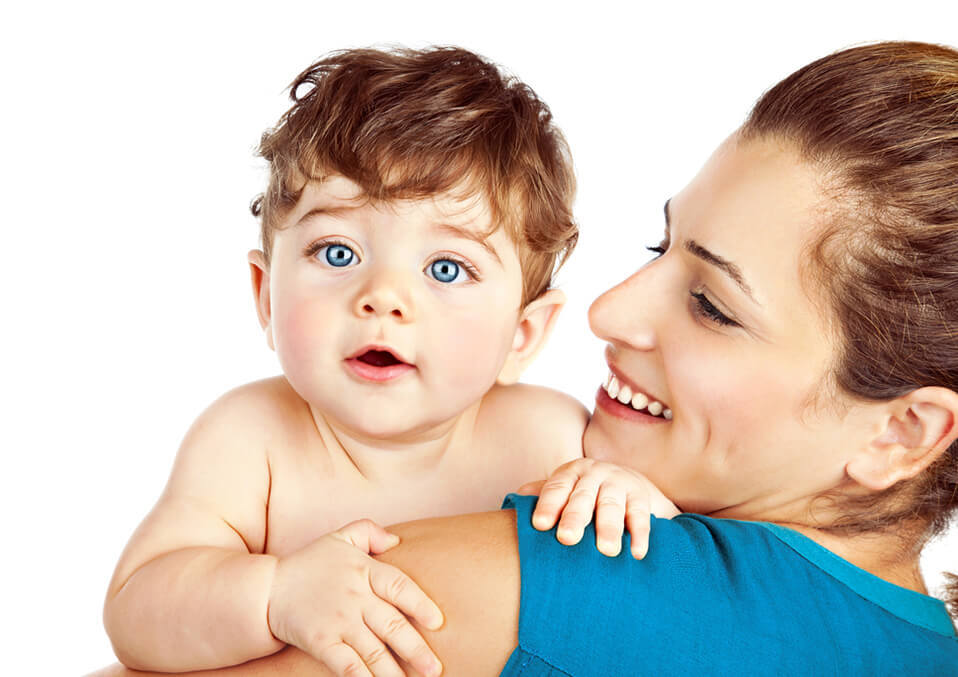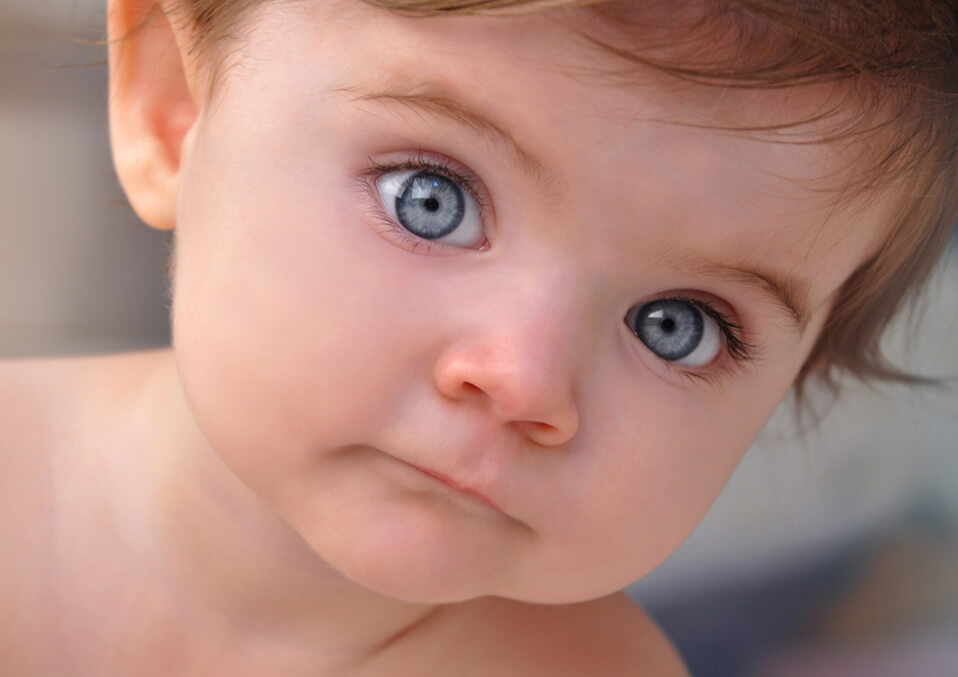
Hoping your baby won’t darken their beautiful blue eyes? You should be mindful that many babies are born with blue eyes that can change their color (usually darker) within the first year of their life. Often, the baby’s eye color should be past the permanent shade at 6 to 9 months. The color of the eyes of your infant ultimately depends on the forms of dominant or recessive genes it got at birth.
Babies and their eye colors

Now, Mama, have a look at these baby blues because they might turn black (or go green). Nonetheless, everyone wonders when and even when she switches the color of the cheek. African, Hispanic, and Asian newborns are almost invariably born with dark eyes, which linger dark, but the color can shift insignificantly in the initial year.
Yet babies in the Caucasus are usually born with dark blue or even dark gray eyes, which can switch before their first birthday many times. It means you have plenty of room in your baby eye color pool to place your bets.
The pigmentation of the iris, like the tone of the hair and skin, depends on a protein termed melanin. We have technoscientifically cells in our bodies called melanocytes, whose role is to discharge melanin, like iris, wherever it is demanded. Once your child is born, his eyes are gray and blue because melanocytes react to light and have been inhabiting in the dark for his whole life.
When do babies’ eyes color become permanent?

In time, the child will have blue eyes if melanocytes secrete only a little melanin. His pupils will look green or brown if they emit a little more. If melanocytes really get active, eyes appear black and may seem very dark in some situations. Since melanocytes take about a year to complete their work, it can be a dicey business calling color to the eye before the first birthday of the baby. After the first six months of life, the color change is slowing down, but there can still be a lot of difference.
The color of the eye is a biological trait, yet not as precise as you could have known in the school in biology.
- Two blue-eyed parents are most inclined to have a blue-eyed child, but not every occasion.
- Two brown-eyed parents (but not guaranteed) are likely to have a brown-eyed child.
- If one of the elders has blue eyes, you can have a child with blue eyes.
- When one origin has brown eyes and one has blue eyes, the possibilities are even on the appearance of the eyes.
The most dramatic change of eye color is likely to occur if your baby is aged 3 to 6 months. By that period, the iris has stashed an adequate quantity of pigment so that you can strongly foretell the final shade.
But even so, the baby’s eye may still have a few surprises— you may always find subtle changes of eye color until she is three years old. Don’t expect the baby browns to revert to white — most babies have dark eyes.
Brown and blue eyes
The practitioners assume that people with blue, gray, and green eyes conduce to be more receptive to light than those with brown and black. Yes, blue-eyed people constantly agonize photophobia and light irritability, which prompts them to glare in the daylight or to feel tired while sitting under fluorescent bulbs for a while.
That resistance is because people with light eyes have fewer pigments than people with darker eyes in many layers of the body. As a consequence, we can not inhibit the influence of light and sunlight. With this respect, parents should keep an eye on their children while they are outdoors and look for opportunities to tire their eyes and to avoid the bright sunlight.
Obviously, notwithstanding of the shade of your baby’s eyes, it is best to shield their eyes with sunglasses. Search for child-sized UV-protective sunglasses. Use UVB and UVA protection lenses to obstruct all classes of ultraviolet light to retain the eyes of your baby healthy.
Genes and eye color
The finishing touch of these pretty eyes always relies on you, your spouse, and a genetic dice roll. Because much is not yet known about the reciprocation between genes and their performance in deciding the tone of the eyes, it is challenging to predict the color of your baby’s eyes.
The amount of melanocytes formulated by scientists is delimited by as many as 15 genes, two of which are best conjectured by how a child’s eye color unfolds. The two genes best known are in two groups, one of brown and black and the other blue and green. The color of the baby’s eye also depends on the mixture of alleles inherited by their parents. At this point, the different shades of the eye, such as black, hazel, blue, and several other variations, are not fully understood.
Nonetheless, on the basis of what is already understood, there are some general guidelines for the shades of a baby’s face. For instance, if both parents have dark eyes, it is feasible that the baby will also have dark eyes because the brown allele is aggressive. Nevertheless, it is not unheard of for two brown-eyed parents to have a blue-eyed baby on both sides of the family.
For years, brown eye color was regarded as the “domineering,” and blue eye color was perceived as the “inactive” component. Yet modern science rises to show that it is not that straightforward to ascertain eye color. The color of the eye is not settled by one or two genes, but fairly by repetitious genes that operate synchronically.
For this cause, infants are not unheard of having entirely distinct eye colors than either of their parents. Therefore, it is not unheard of for two blue-eyed parents to have a child with brown eyes. This method takes place because the tone of the eyes is polygenic or because many genes perform together to decide the color of the eye.
Read also:
- Best Hair Ties for Babies
- Blue-eyed Babies: Shall it Leave or Stay?
- Best Hair Ties on Babies – How Safe Are They for Your Kids?


